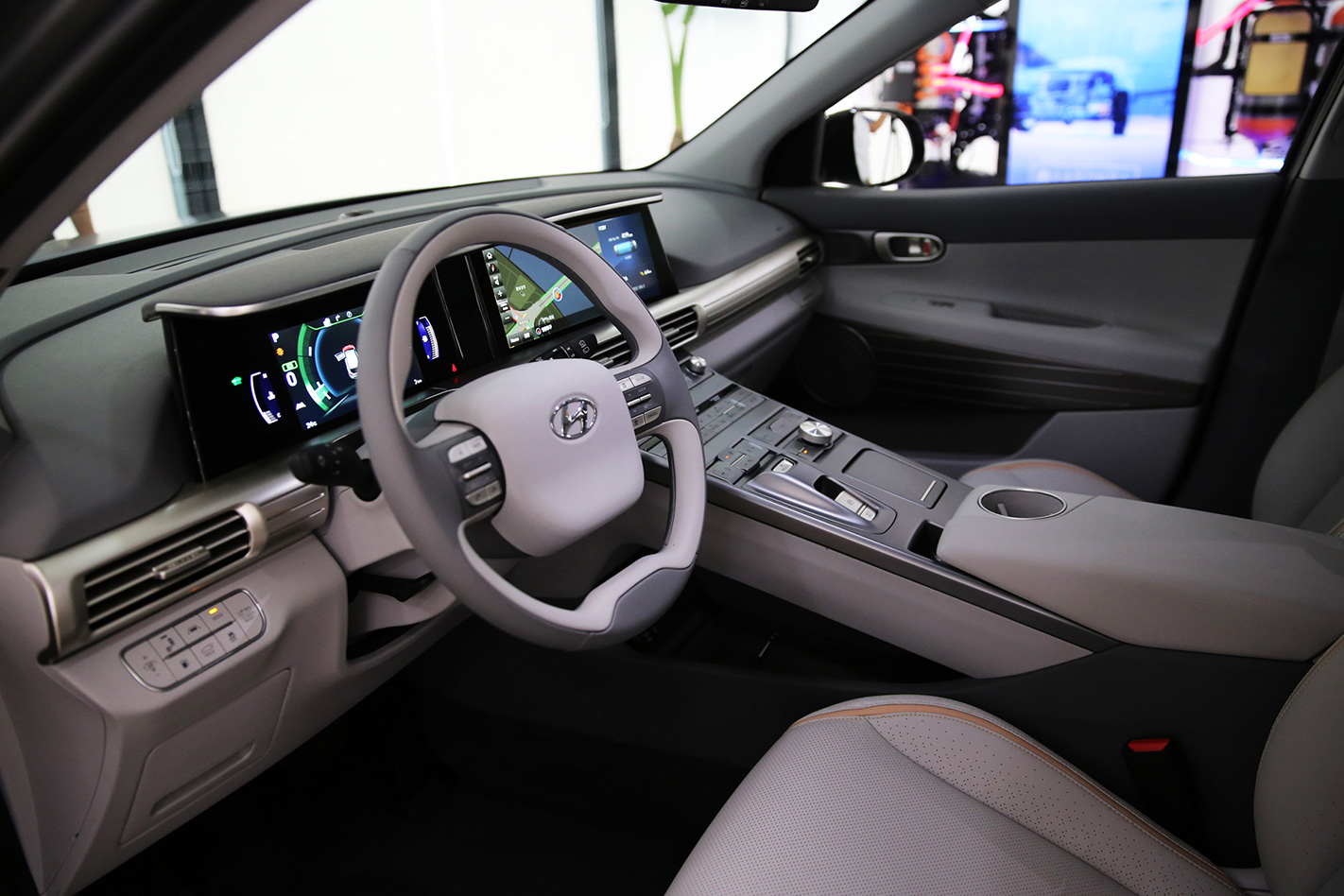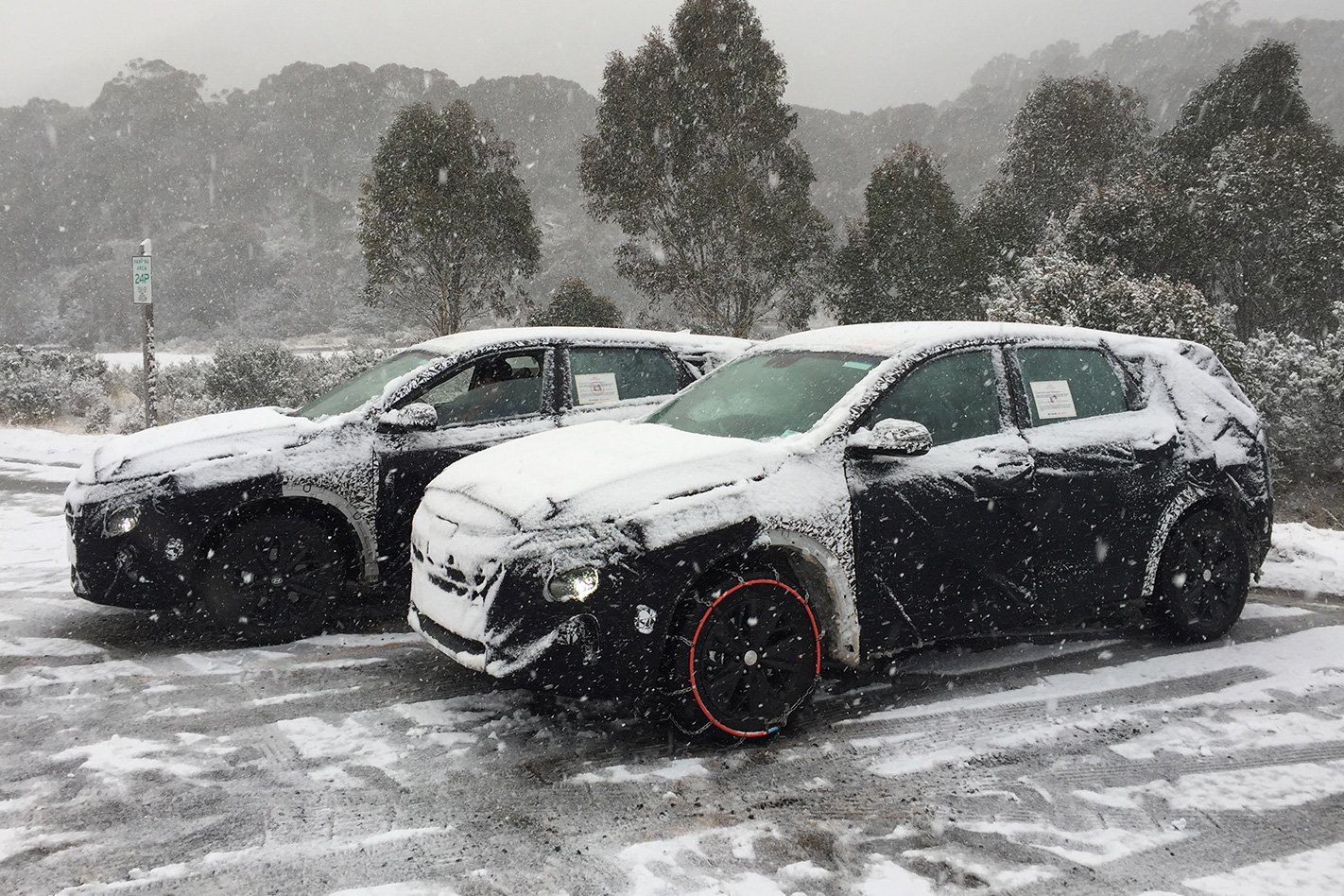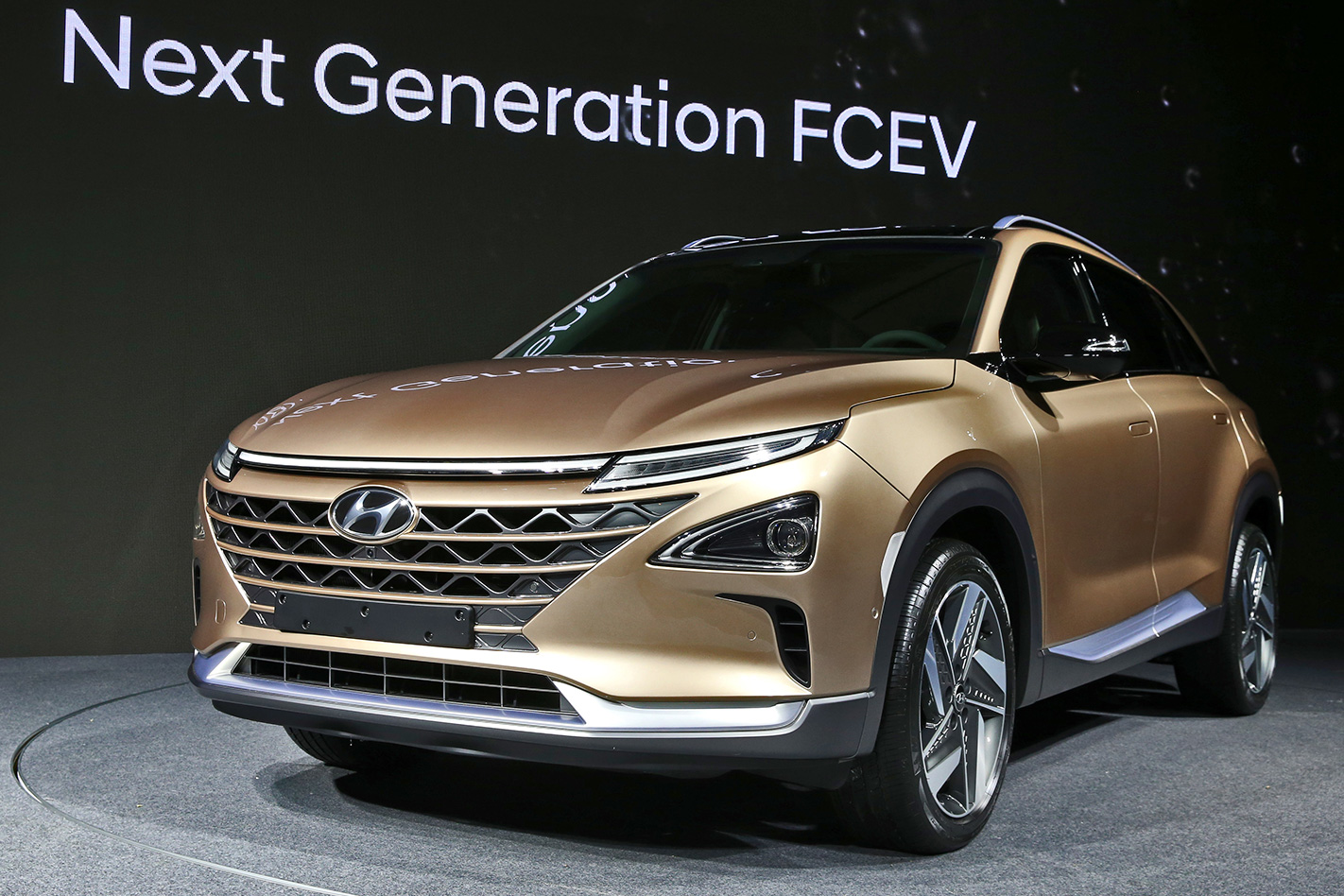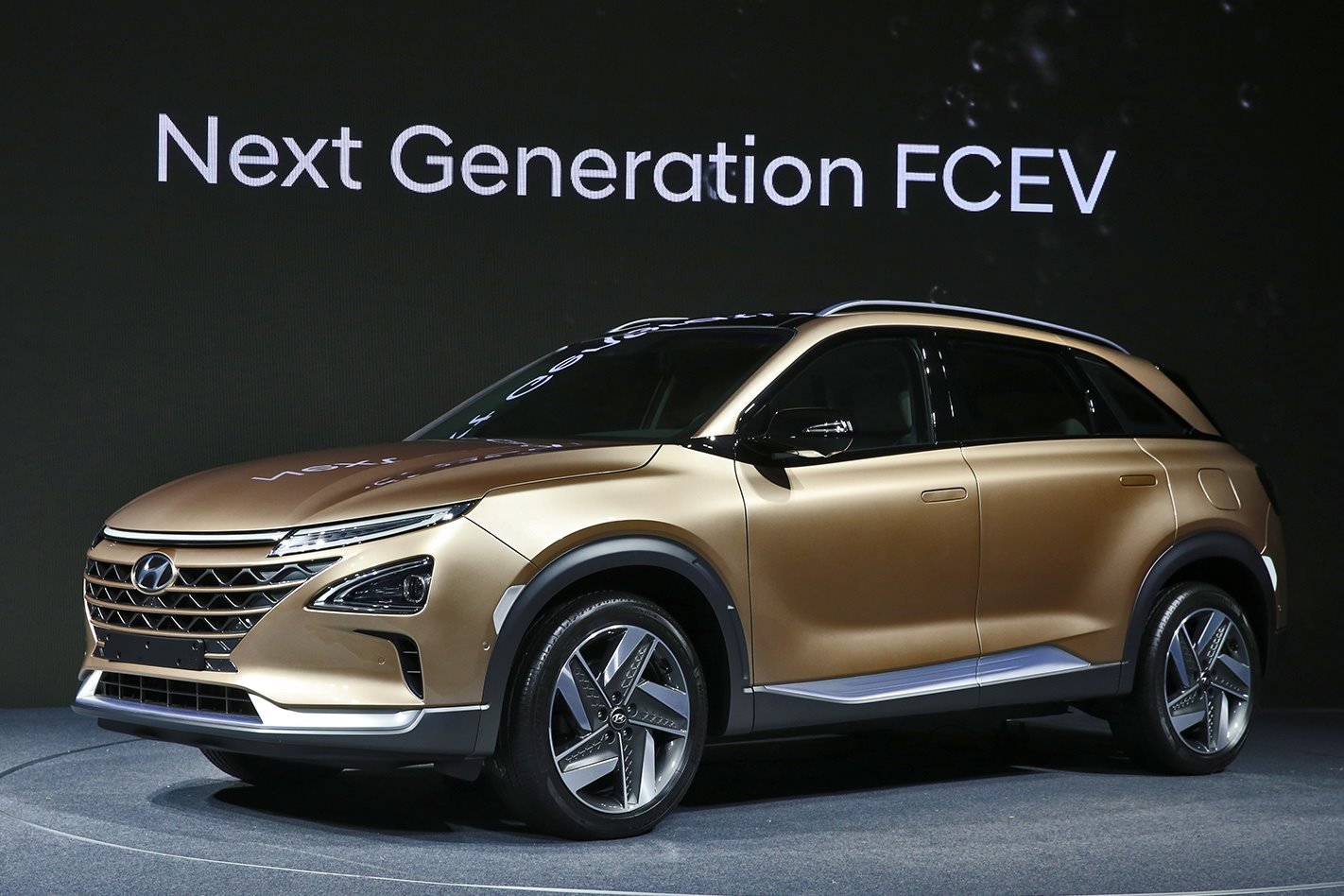HYUNDAI has offered a first glimpse of its all-new hydrogen powered SUV at a special event in South Korea this morning, previewing its latest advances in zero-emissions drivetrains and the future of its electrified vehicle program.
The company has been developing a successor to the ix35 Fuel Cell, but all details including performance figures, range, and even its name have been kept completely under wraps until now.
Wheels understands the new version will not continue the nomenclature of the previous fuel-cell powered high-rider, or the Tucson successor name, but the vehicle’s new moniker will be confirmed at the Consumer Electronics Show in Las Vegas in 2018 along with more technical information. For now, the vehicle has been codenamed FE.
Hawk-eyed snow bunnies may have already spotted the top secret vehicle on Australian roads, with a pair of the prototypes brought to Australia for cold weather testing last month.

Hyundai Motor Company Australia is yet to confirm if the production version of the FE will be offered in local showrooms, but at least 20 examples will be coming to Australia in late 2018 as part of the Hornsdale Windfarm Stage 3 project.
Unlike the ix35, the latest FCEV platform has been developed specifically to accommodate a fuel-cell drivetrain and the benefits are clear, says Hyundai.
Compared with its outgoing sibling, the FE has a 60 percent system efficiency – an improvement of nine percent over the ix35 – and has a driving range of more than 580km under South Korean testing standards and about 800km on the European economy scale, which represents more than 300 extra kilometres over the previous car.

Thanks in part to Australia’s cold climate and the recent testing, cold start characteristics have also been improved – a challenge for any fuel cell, which needs to be warmed before returning optimum efficiency and performance.
While fuel-cell stack optimisation was key to the development of the latest Hyundai FCEV, its complex storage tank has also been significantly improved.
Three equal-sized composite-material cylinders replace the two different sized tanks in the previous model and have been developed to use advanced liners and a new material layering process, which has allowed the overall thickness and weight to be reduced without compromising durability.
Hyundai has not specified the capacity of the new storage layout, but it is expected to exceed the ix35 Fuel Cell, which had a maximum fill of 5.67kg of hydrogen at maximum fill pressure.
From the image of Australian winter testing, it appears the new car will be front-drive rather than an all-terrain conquering all-wheel drive, with snow chains applied to only the front wheels.

For the vehicle’s exterior styling, “organic and flowing forms” were inspired by the car’s only emission – water, while clean design is representative of its non-polluting nature, says Hyundai.
While the new fuel-cell model is a significant move in its own right for the company, Hyundai says the unnamed car is representative of a wider strategy and a hint at what is to come. Following on from the Ioniq small sedan that is available with three electrified drivetrains, more environmentally considerate cars are on the way.
Before the year 2020 is out, Hyundai will offer 31 ‘eco-friendly’ models in its ranks as part of a ‘multi-pronged approach’ that will spawn electric, hybrid, and fuel-cell cars under both Hyundai and Genesis brands.
HMCA has yet to update its strategy regarding the future of electrified vehicles but the Ioniq will arrive in 2018 and the company has already imported an ix35 Fuel Cell for publicity and demonstration purposes, along with its own hydrogen filling station.
Globally speaking, the eco-car roll out will include an EV version of the Kona compact SUV in the first half of 2018, followed by a pure electric Genesis model in 2021, and another model Hyundai simply describes as ‘a long range EV with 500km range’ after 2021.






